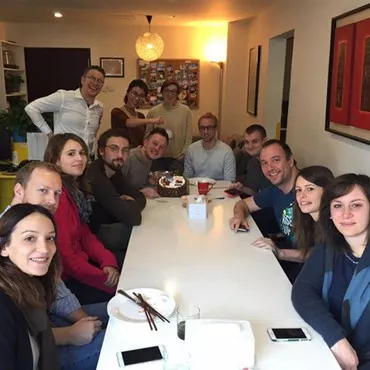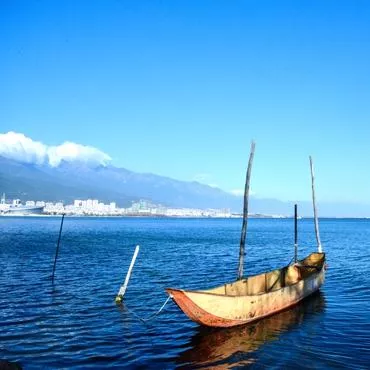Site of the Guangxi Provincial Art Museum
Nestled in the heart of Guilin’s Xiufeng District at 85 Jiefang West Road, the historic Guangxi Provincial Art Museum stands as a testament to a bygone era. This architectural gem, with its south-facing orientation, stretches 40 meters from north to south and 28 meters from east to west. Rising to a height of 10 meters, the structure encompasses over 1,300 square meters, with a building area of approximately 1,120 square meters. Its red walls and green tiles, blending Western and Chinese architectural styles, made it a rare and luxurious edifice of its time.
The Museum is divided into two floors, each a trove of artistic and cultural significance. The exterior walls are adorned with three bas-reliefs representing music, drama, and fine arts, echoing the cultural purpose of the building. Inside, the venue houses exhibition halls, a theater, and lounges. The exhibition halls offer a comprehensive narrative of the Museum's storied past, providing visitors with a deep dive into the cultural movements of Guilin during the War of Resistance. The spacious and bright interior, with its modern ceiling design and spotlights, exudes a contemporary flair.
The theater, equipped with 466 seats, features performance subtitle screens on both sides of the stage, ensuring an immersive visual experience. The lighting setup, comprising 132 lights, includes 28 computer-controlled moving lights, creating a dynamic ambiance. The acoustics are state-of-the-art, featuring the world-renowned L-Acoustics sound system, an AVID Venue SC48 large digital mixing console, and over a dozen Shure AD series wireless and wired microphones. This modern theater is a testament to the blending of historical significance with contemporary functionality.
On the morning of February 15, 1944, the newly completed Guangxi Provincial Art Museum hosted the grand opening of the renowned Southwest Drama Exhibition. The event was attended by nearly a thousand people, including representatives from eight provincial theater groups (Guangdong, Guangxi, Hunan, Yunnan, Guizhou, Hubei, Jiangxi, and Fujian), distinguished guests from various circles, social elites, Kuomintang government officials, foreign diplomats, and journalists from around the world. The following day, the drama performances began in earnest, featuring an array of 23 spoken dramas, 29 Ping operas, 8 Gui operas, and one opera. The exhibition also included ethnic songs and dances, puppet shows, acrobatics, and magic performances. In total, 175 performances were held, drawing an audience of over 100,000 people.
On March 1, the Southwest Drama Workers Conference opened at the Museum, concluding on March 17. The conference brought together over 1,000 members from 32 theater groups across eight southwestern provinces, along with invited drama experts. The conference unfolded in three phases: an overall report on the drama movement and regional work reports, followed by specialized reports and discussions, and finally, the debate and adoption of proposals. Concurrently, on March 17, the drama archives exhibition commenced, showcasing over 1,000 items, including theater movement documents, theater group histories, rare drama texts, critical essays, writers’ manuscripts, creative experiences, directors’ notes, stage models, costumes, props, theatrical masks, busts of world-renowned playwrights, sculptures of characters from plays, as well as various statistical charts, stage photos, sketches, and promotional materials. The exhibition also featured dramatic photographs flown in from Moscow by the Soviet Embassy and stage models from the Shakespearean era and modern British theater, sent by British priest Father Ian. The exhibition, which spanned more than three months, concluded on May 19. The Southwest Drama Exhibition was hailed as “the finest chronicle of the drama movement” and a reflection of the Chinese drama movement's relentless pursuit.
Today, the Site of Guangxi Provincial Art Museum stands as a cherished cultural treasure of Guilin, a symbol of the crucial role it played in the nation's wartime (War of Resistance against Japanese Aggression) cultural efforts. It continues to serve as a vital hub for arts education, performances, and cultural exchange, remaining one of Guilin’s premier venues for artistic expression and public engagement. In October 2019, this site was recognized as a National Key Cultural Relic Protection Unit by the State Council of the People's Republic of China, securing its legacy for future generations.
















